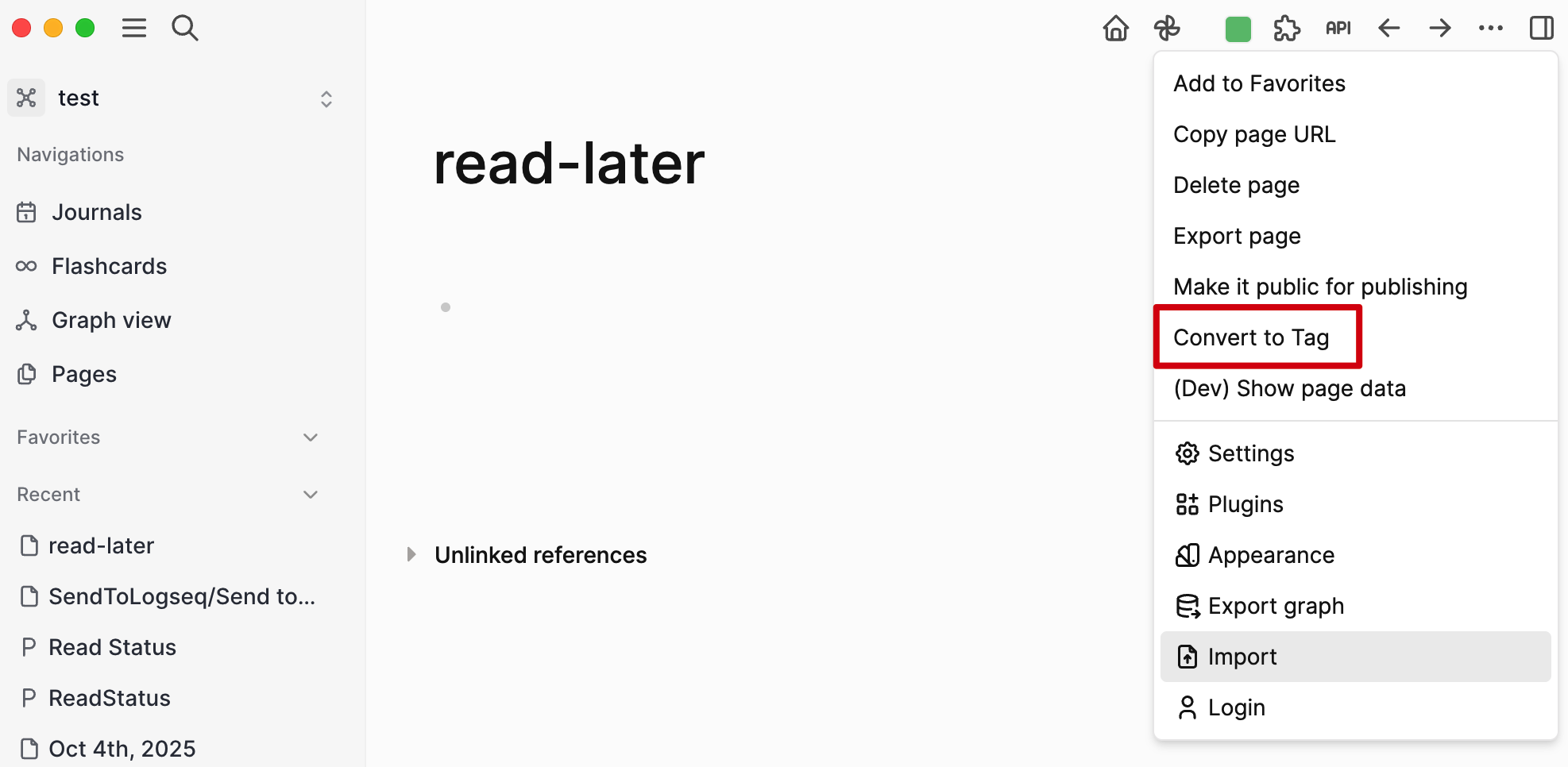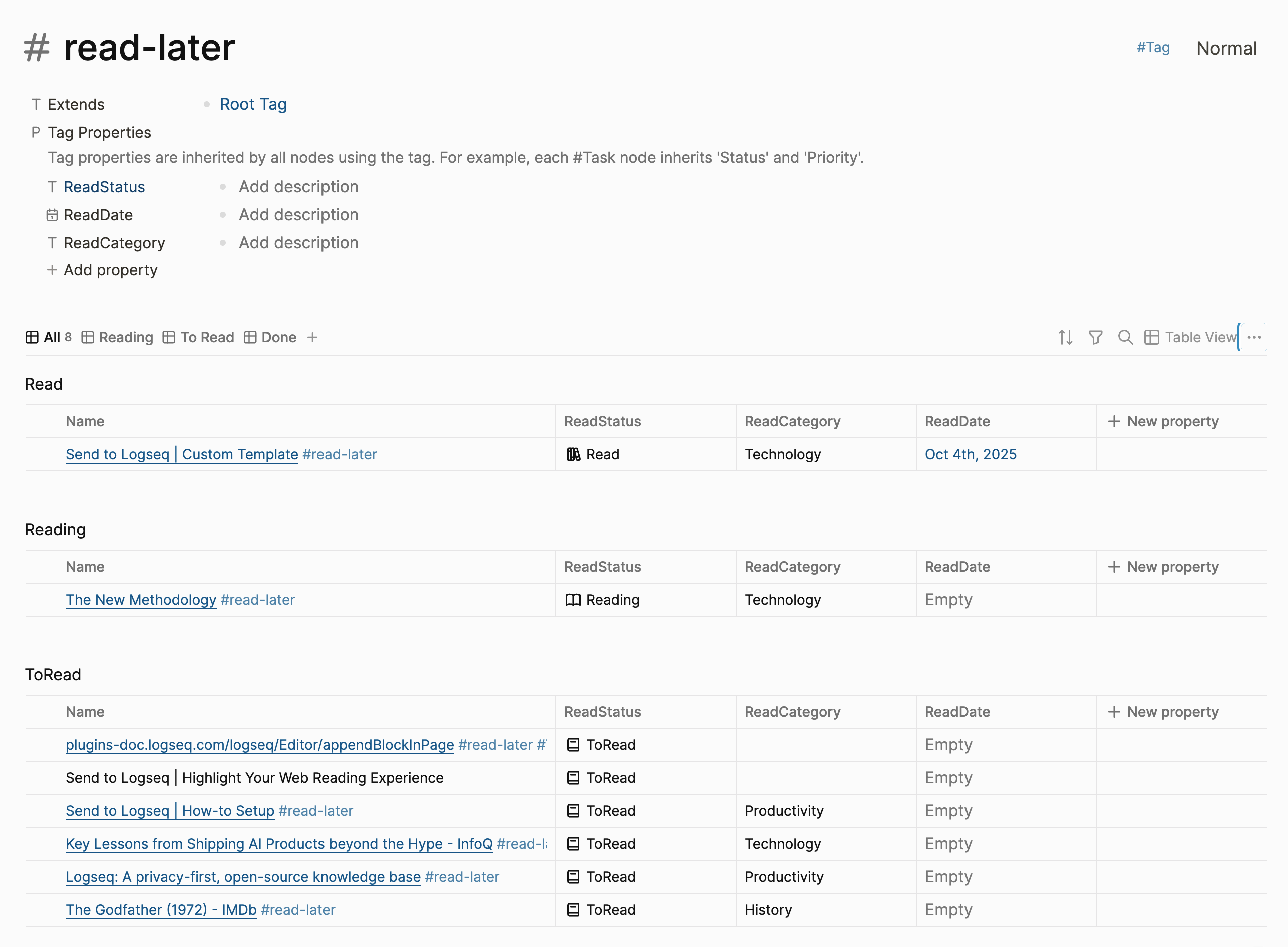Omnivore was a beloved read-it-later app for many Logseq users. However, after being acquired, it shut down, leaving users searching for alternatives. With the upcoming release of Logseq’s database version, you now have the perfect opportunity to build a personalized read-it-later system that fits your exact workflow.
This guide will show you how to leverage Send to Logseq’s powerful capture capabilities, combined with Logseq database version’s tagging and property features, to create a simple yet effective read-it-later system.
Note: Capturing page content and links with custom formatting requires Send to Logseq’s Custom Template feature, which is available with a Pro license. Learn more about Custom Templates and upgrade here.
Prerequisites
Before getting started, make sure you have:
- Logseq Database Version installed
- Send to Logseq extension installed in your browser
- Send to Logseq Pro license for custom template features
Setting Up Your Read-It-Later System
Step 1: Create a #read-later Tag
First, create a dedicated tag for your read-it-later items:
- Create a new page in Logseq called
read-later - Click on the page menu and select Convert to tag

Step 2: Configure Tag Properties
Add properties to your #read-later tag to track reading status and other metadata:

Key properties to consider:
- ReadStatus - Track whether an item is “ToRead”, “Reading”, or “Read”
- ReadCategory - Track content category, like History, Technology, etc.
- ReadDate - Track when read is finished
Step 3: Configure Custom Templates in Send to Logseq
Send to Logseq supports capturing both links and full page content. Configure custom templates to automatically tag captures and set properties:
- Open the Send to Logseq Options page
- Enable the Capture content with custom template feature
- Update the
captureLinkandcaptureArticletemplates as shown below:
Template for Capturing Links
Use this template when you want to quickly save a link to read later:
{{#captureLink}}
{{#todo}} TODO {{/todo}} [{{content}}]({{url}}) #read-later
ReadStatus:: ToRead
{{/captureLink}}
This template will:
- Create a
#taskblock with the page link for markdown graph - Add the
#read-latertag - Set the
ReadStatusproperty to “ToRead” - Record the capture date
Template for Capturing Full Articles
Use this template when you want to save the entire page content:
{{#captureArticle}}
URL:: [{{title}}]({{pageUrl}})
PageName:: {{title}} #read-later
ReadStatus:: ToRead
{{content}}
{{/captureArticle}}
This template works in two ways:
When capturing as a standalone page:
- Creates a new Logseq page with the article title
- Adds the
#read-latertag to the page - Sets the
URL, andReadStatusas page properties - Captures the full article content
When capturing as a block:
- Creates a new block with the article title
- Adds the
#read-latertag to the block - Sets the
URLandReadStatusas block properties - Captures the content as child blocks
Step 4: Start Capturing Content
With everything configured, you’re ready to build your reading list:

Organize Your Reading Queue
With Logseq database version’s powerful querying capabilities, you can create custom views:
- Unread items: Query all blocks/pages with
#read-laterandReadStatus:: ToRead - Currently reading: Track items with
ReadStatus:: Reading - Completed: Review items with
ReadStatus:: Read - By date: Organize your reading list by capture date
Getting Help
If you have questions or need assistance setting up your read-it-later system, feel free to contact us at [email protected] or reach out on X @dytes_studio.
Happy reading and note-taking!